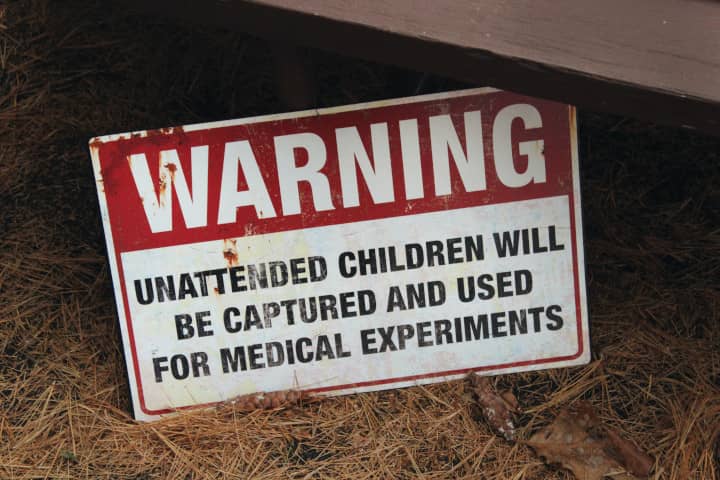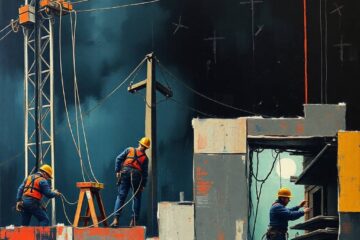What is safety culture and why is it important in the workplace? A strong safety culture means having a collective understanding and commitment to safe practices. It involves employees at all levels of an organisation taking personal responsibility for their own safety and for contributing to the overall safety of their workplace. Creating and maintaining a strong safety culture can help prevent injuries, protect workers’ health, and improve productivity.
Let’s take a closer look at what safety culture is and some of the benefits it can provide.
What is meant by ‘safety culture’?
Safety culture is the shared values, beliefs, and attitudes that influence the way employees think about, and approach safety in the workplace. A strong safety culture instills a sense of personal responsibility for safety in each individual employee. It also encourages employees to look out for one another and work together to identify and correct potential hazards. Creating a strong safety culture requires buy-in from management and employees at all levels of the organisation.
A strong safety culture is not something that can be imposed from the top down – it needs to be built from the ground up.

What are the signs of a bad safety culture?
There are a number of signs that can indicate a weak or non-existent safety culture in the workplace. Some of these signs include:
- Lack of communication about safety procedures and expectations
- Inadequate training on safety procedures
- Poorly maintained equipment or facilities
- Unsafe work practices that are tolerated or even encouraged
- Lack of reporting of near-misses or minor accidents
- Lack of follow-through on safety concerns that are reported
- A blame culture, where employees are afraid to report mistakes or accidents for fear of being disciplined
As you can see they are all quite negative, and it’s easy to understand why employees will lose faith in their employers if they see these signs.
What are the signs of a good safety culture?
A strong safety culture will have the opposite effect of a bad safety culture – it will instill a sense of pride and ownership in employees, and encourage them to take an active role in promoting and maintaining safe workplace practices. Some signs that your workplace has a strong safety culture include:
- Employees feel comfortable reporting near-misses or accidents, without fear of reprisal
- There is open communication about safety procedures and expectations
- Safety concerns are taken seriously and addressed promptly
- Employees are actively engaged in identifying and correcting potential hazards
- Incidents and injuries are declining, thanks to the efforts of everyone in the organisation
Creating and maintaining a strong safety culture is a joint effort between management and employees. Management needs to provide the resources and support necessary to ensure that safety is a priority, while employees need to be willing to take personal responsibility for their safety and the safety of their co-workers. When everyone in the organisation is committed to safety, it helps create a safer workplace for everyone.
What are the benefits of having a strong safety culture?
There are many benefits to having a strong safety culture in the workplace. Perhaps the most obvious reason is that it can help to prevent accidents and injuries in the workplace. When employees are personally invested in their own safety and the safety of their co-workers, they are more likely to identify and correct potential hazards. This can help prevent accidents and injuries from happening in the first place.
In addition, a strong safety culture can lead to increased productivity by reducing loss of time due to accidents and injuries. A strong safety culture can improve morale in the workplace by creating a sense of community and solidarity among employees, and also build trust between employees and management. Finally, and most importantly, a commitment to safety and a strong safety culture can help prevent accidents and injuries.

How to build a strong safety culture in the workplace?
Building a strong safety culture in the workplace takes time and effort. However, the benefits are well worth the investment. If you are interested in creating a strong safety culture in your workplace, there are a few things you can do to get started.
Here are 8 tips for creating a strong safety culture in the workplace:
1. Make safety a priority
If you want to create a strong safety culture in the workplace, you need to make safety a priority. This means setting aside time to discuss safety concerns and identify potential hazards. All new employees should be trained on your company’s safety policies and procedures. In addition, all employees should be given regular opportunities to participate in safety training. Employees should trust that if they come to you with a concern, you will take it seriously.
Also, when planning a job, task or process, consider safety as an important part of the planning process. By taking the time to plan for safety, you can help prevent accidents and injuries from happening.
2. Communicate openly about safety
Creating a strong safety culture requires open communication about safety concerns. Employees should feel comfortable raising concerns about potential hazards. Management should also be open to hearing suggestions for improving safety. Finally, it means being proactive about addressing potential hazards before they become accidents or injuries.
Remember communication and consultation is part of the WHS legislation, which means that it is the law, so not only is it an important part of improving safety culture, you can meet your legislative requirements by doing it too. Safety meetings or toolbox talks are a great way to communicate this information to employees.
3. Encourage employees to take ownership of their own safety
A strong safety culture in the workplace starts with each individual employee taking responsibility for their own safety. Employees should be encouraged to identify potential hazards and report them to management. They should also be encouraged to participate in safety training and take an active role in maintaining a safe workplace. They should not be afraid to tell management if they see something that could be unsafe.
Encouraging employees to take ownership of their own safety is a key part of creating a strong safety culture. When employees feel like they are part of the solution, they are more likely to be proactive about preventing accidents and injuries.
4. Reward employees for their commitment to safety
Recognising and rewarding employees for their commitment to safety is a great way to encourage a strong safety culture in the workplace. Try using incentive programs to encourage employees to participate in safety training or to report potential hazards. You could also consider giving awards to employees who go above and beyond in their commitment to safety.
However, we would never recommend rewards that lead to workers not reporting injuries or taking leave if they are not fit for work. Some businesses have signage that brags about their last LTI (Lost Time Injury), which rather than promotes workers being safer, actually leads to a culture of workers being expected to work even if they are injured, or returning to work sooner than they should.
5. Lead by example
As a business owner or manager, you play a vital role in creating a strong safety culture in the workplace. You can set the tone for safety in your workplace by being a role model for safe behaviour. Make sure you are always following safety procedures and encourage your employees to do the same. Don’t ask your workers to do anything that you know is unsafe, and never put pressure on them to finish a task faster than they would usually work. Pressure while completing tasks can often lead to shortcuts being taken, which can then lead to accidents.
6. Aim for improvement
Aim for improvement, not perfection.
There is no such thing as a perfect safety record. Even workplaces who follow the rules still have incidents from time to time. The goal should be to always be striving for improvement. Use accidents as an opportunity to learn and make changes that will prevent them from happening again in the future. Implementing new safety procedures or investing in new safety equipment can help to make your workplace safer.
7. Make everyone accountable for safety
When we talk about accountability, it’s not about the blame game. It’s about making sure everyone understands their role in keeping the workplace safe. Employees should know what is expected of them in terms of safety, and they should be held accountable for following safety procedures. Management should also be held accountable for ensuring that the workplace is safe and that employees have the training and resources they need to stay safe.
Accountability is important because it helps to ensure that everyone is taking safety seriously. When employees know they will be held accountable for their actions, they are more likely to follow safety procedures and report potential hazards. It’s also important that workers know that their managers are also accountable for safety in the workplace, and must also follow the rules. This can help to create a culture of mutual respect and trust.
Following safety laws and regulations is an important part of creating a strong safety culture in the workplace. Make sure you are up to date on all the latest safety laws, and that your employees are also aware of them. Make sure that you have all the correct PPE, and documents, and complete tasks as per the regulations and codes of practices.
Use safety inspections as an opportunity to identify any potential hazards in the workplace and make sure they are rectified.
Safety laws are in place to protect workers, and it’s important that everyone in the workplace is following them. By making sure you are up to date on the latest safety laws, you can help to create a safe environment for your employees, plus it makes good business sense.
8. Keep a record of safety meetings, toolboxes and training
As part of a business’s obligations and legislation requirements and to show a commitment to safety for workers, management needs to keep records for all things safety related. These records should include the date, topic and the full names of all attendees, along with their signatures.
The types of things which records should be kept for, include:
- Toolbox talks
- Induction training for new employees
- Re-training of existing workers
- Near misses, accidents or injuries
- Maintenance of equipment
Should an incident or accident occur, this documentation will help a business present their safety record and the steps they’ve undertaken to ensure a safe environment for all their workers and members of the public. This can, and often does, reduce the amount of the fine that that a business has to pay, compared to a business who has no record of ever doing, or considering safety in their business.
Our range of professional and builder subscriptions have all the documents you need to record all of this information for a wide range of industries and professions.

Safety Culture Toolbox Talk
Giving toolbox talks in general is a great way to help improve safety culture and communicate and consult with workers. Toolbox talks are an effective way to improve safety culture because they provide an opportunity for workers to share their concerns and ask questions about safety. They also allow managers to address any safety issues that have been raised. Toolbox talks are a great way to improve communication between workers and management, and to ensure that everyone is on the same page when it comes to safety.
By conducting a safety culture toolbox talk you can get a better understanding of what your workers want, and also explain how you plan to improve the safety culture of your workplace, and why it is important. This can help to create a shared understanding of the importance of safety culture, and why everyone needs to play their part.
When conducting a safety culture toolbox talk, it is important to:
- Make sure that everyone understands the importance of safety culture
- Encourage workers to share their concerns and ask questions about safety
- Address any safety issues that have been raised
- Explain how you plan to improve the safety culture of your workplace
- Make it clear that buy-in is expected from all workers
- Advise that everyone will be held to the same standards, including management
By taking these steps, you can help to create a shared understanding of safety culture, and why everyone needs to play their part. This can help to improve communication and consultation between workers and management, and make your workplace safer.
How often should a safety culture toolbox talk be held?
A safety culture toolbox talk should be held regularly, depending on the needs of your workplace. You may want to hold a toolbox talk every month to talk about how the safety culture of the workplace is improving, or maybe just once a year as a reminder. It is important to make sure that you are holding toolbox talks in general regularly enough to keep workers up to date with any changes to safety procedures, or new hazards that they need to be aware of.
You may also want to hold a safety toolbox talk more often if there have been any incidents or near-misses at your workplace or if you feel workers are starting to get complacent. This can help to ensure that everyone is aware of why safety culture is so important, and that they understand how working together will benefit everyone.
Here is a range of other toolbox talks you might want to do.
How can Safe-R Outcomes help your business?
Our Professional subscriptions contain many essential documents including:
- WHS Management Plans / Safety Manuals
- SWMS (if the job entails high risk tasks)
- a range of SOPs, Registers, Toolbox Talks, Checklists and Policies
These can all be downloaded and are not blank templates, so can be used immediately.
We also provide Induction training to help you on-board new employees and contractors.
As you can see it is all done for you so it makes it nice and simple. You can find out more on the Industries and Professions page.
If you’re concerned about the time commitment and knowledge required to implement the correct documents, procedures and training, Safe-R Outcomes can help. We strive to reduce the time and cost for businesses to implement their legally necessary safety requirements.


